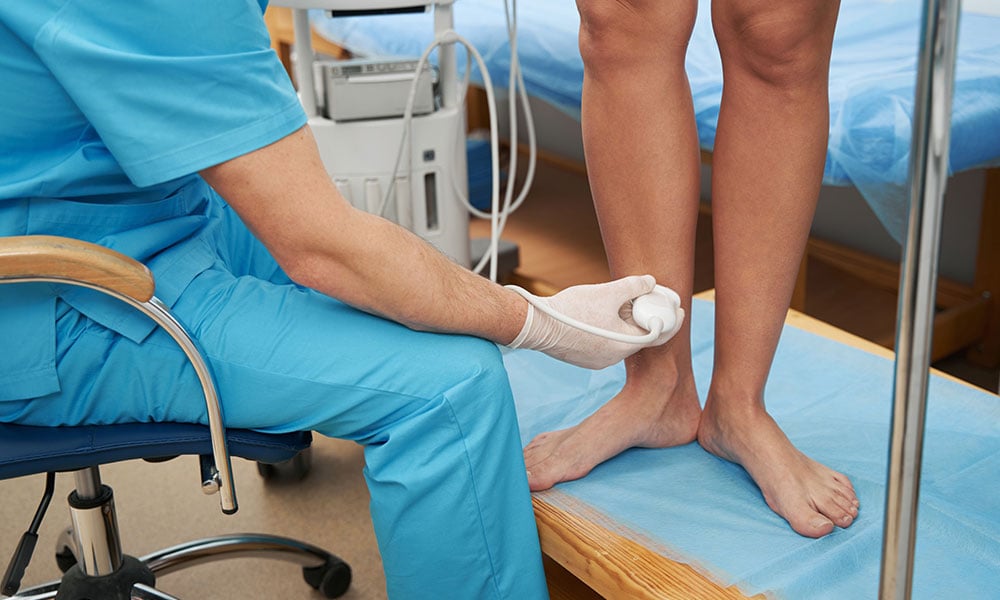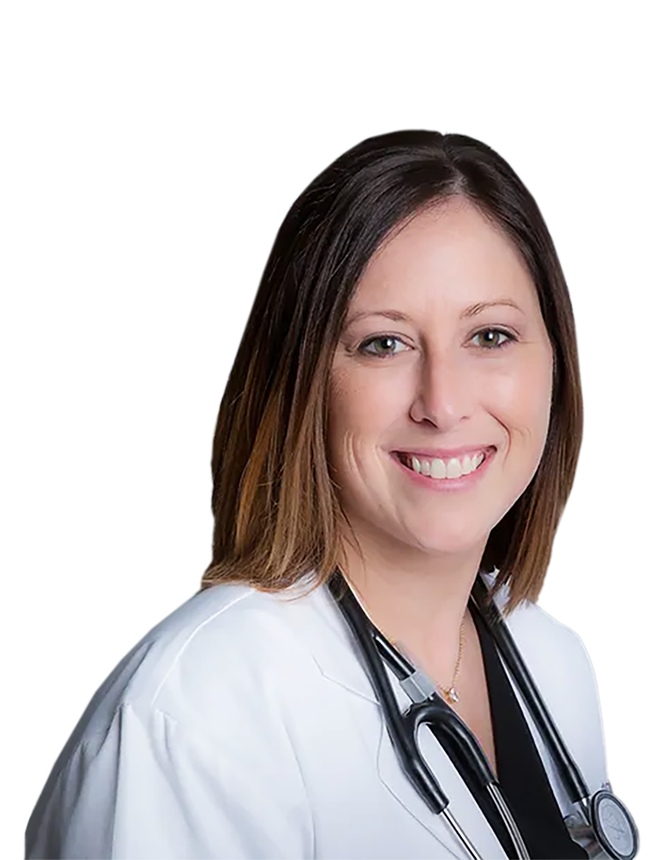Vein &
Vascular Care
Having vein and vascular issues can cause you great discomfort. Finding vein and vascular care can provide significant relief from symptoms. Cardiovascular Medicine is proud to offer a state-of-the-art vein treatment center to treat all types of venous diseases, including varicose veins.
When to See a Vein Specialist
Venous disorders can cause damage to your veins, so it’s important to seek treatment if you’re experiencing symptoms. Our vein specialists can help you understand what is causing you discomfort with thorough diagnostic testing. We are able to provide relief for those with various venous conditions, including:

Diagnostic Testing
Diagnosing venous disorders can involve many different techniques. Conditions such as varicose veins are often visible, so we begin by conducting a physical examination. Understanding the cause and extent of venous disease sometimes requires seeing how well your blood is flowing—tests such as venous Doppler ultrasound can help us get an accurate diagnosis.
Vein & Vascular Treatments
We have two main goals when treating your venous condition: alleviating your discomfort and improving blood flow. If your vein and vascular issues become severe, we are able to help. Our minimally-invasive treatment options will help you feel better and get back to your normal life within a few days. They include:
Non-Thermal Adhesive Vein Ablation Procedures
What is Non-Thermal Adhesive Vein Ablation?
Veins in the legs have tiny valves that open and close to prevent blood from back flowing. Venous insufficiency, also known as vein disease, develops when these valves become weakened or damaged, causing blood to flow backward toward your feet rather than toward the heart. This reflux can lead to varicose veins – a build-up of blood in affected veins that creates pressure and causes them to bulge out from under the skin. The most common symptom of varicose veins is a feeling of pressure or heaviness in the affected leg. Other symptoms include:
- Pain
- Swelling
- Itchiness
- Restlessness
- Ulcerations
A non-thermal adhesive vein ablation is a simple, minimally-invasive procedure involves inserting a small tube into the affected vein and administering an adhesive to seal the affected vein and reroute blood to healthier veins. Eventually, the sealed-off vein will collapse and dissipate into the body. The procedure generally takes less than an hour, allowing patients to return to work or home the same day. Because this procedure uses an adhesive rather than heat ablation to seal the vein, it also poses less risk and recovery time.
What to Expect
On the day of your appointment, a member of our staff will escort you to an exam room, explain the procedure, answer any questions, and ask you to sign a consent form. Next, your vein specialist will examine your legs and identify the veins requiring treatment.
Using a local anesthetic, your specialist will numb a small area of your leg before using ultrasound imaging to insert a tiny catheter into the affected vein. You may feel a pinch but pain is generally minimal. Using a syringe, your vein specialist will inject a safe and effective adhesive agent into the affected vein. Within five to seven days, the adhesive conforms to the dimensions of the vein and hardens to seal the vein.
Depending on the severity of your varicose veins, multiple injections may be required to deliver the agent to all affected areas. Following the procedure, your vein specialist will apply compression stockings to your legs to prevent the treated vein from refilling with blood.
Recovery
It can take up to four weeks for your treated veins to heal fully. You may experience some redness and irritation at the injection site. In many cases, patients can resume normal activities on the same day.
You may be instructed to wear knee or thigh-high compression stockings for up to 14 days, which must be worn day and night and must stay clean and dry. Following the procedure, your doctor may also encourage physical activity, such as walking or biking, to promote healthy blood flow.
Risks & Side Effects
For most patients, the risks and side effects of non-thermal vein adhesive ablation are minimal. Following the procedure, you may experience some tenderness and redness in the treated areas. Discomfort is generally mild and improves quickly. If you experience sudden severe headache, confusion, or signs of an allergic reaction, such as hives, swelling of your face, lips, tongue, or throat, or difficulty breathing, contact your caregiver immediately.
To alleviate some side effects, your vein specialist may recommend elevating your legs, applying warm packs to the affected area, or using an over-the-counter pain reliever. If pain worsens or does not improve over time, contact your physician right away.
Am I a Candidate?
If you are between the ages of 30 and 60, and suffer from the uncomfortable side effects of varicose veins, you may be a candidate for non-thermal adhesive vein ablation. This procedure may also be recommended for patients who cannot tolerate compression stockings, have affected veins that are located in deeper layers of tissue, or are more than two centimeters in diameter.
Non-thermal adhesive vein ablation may not be suitable for everyone, such as those who are allergic to adhesives like super glue or have been diagnosed with arterial disease. Other disqualifying factors include:
- Mobility issues
- A history of blood clots in your veins or lungs
- Major surgery within the last three months
- A recent extended hospital stay
- Pregnancy
More on Non-Thermal Adhesive Vein Ablation
Risk Factors of Varicose Veins
How to Prepare for The Procedure
Before the procedure, your vein specialist may ask you to:
- Refrain from using any lotions or products on your legs.
- Bring a pair of loose, machine-washable shorts for the procedure.
- Avoid wearing compression stockings 24 hours prior to the procedure.
Additional Side Effects
Other side effects can include:
- Swelling or soreness
- Bruising
- Infection
- Allergic reaction to the adhesive
- Blood clots
Meet Your Illinois and Iowa
Cardiovascular Physicians
CVM Locations
Insurance Providers We Accept
In Search of Care? Request a Consultation Today



